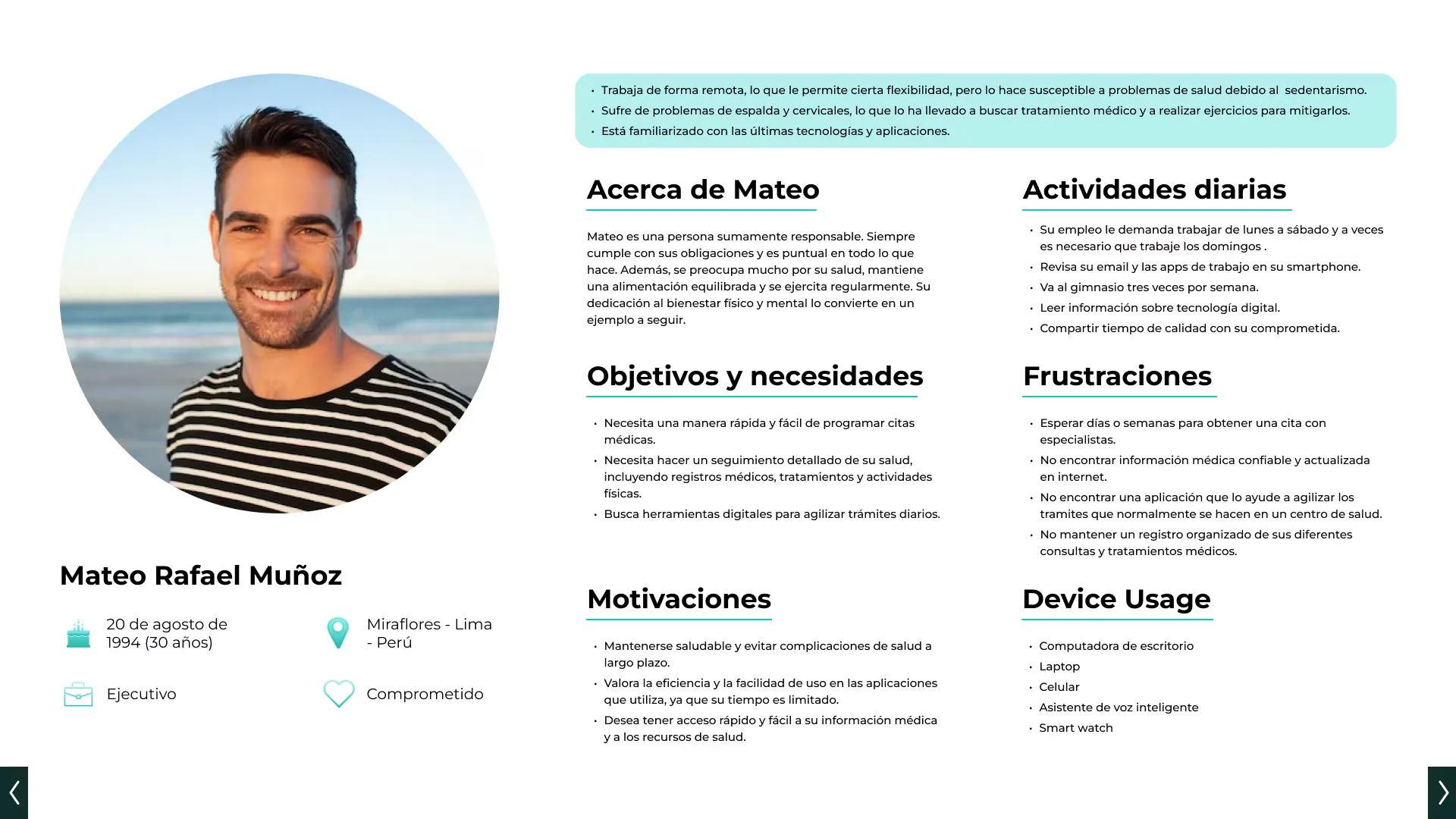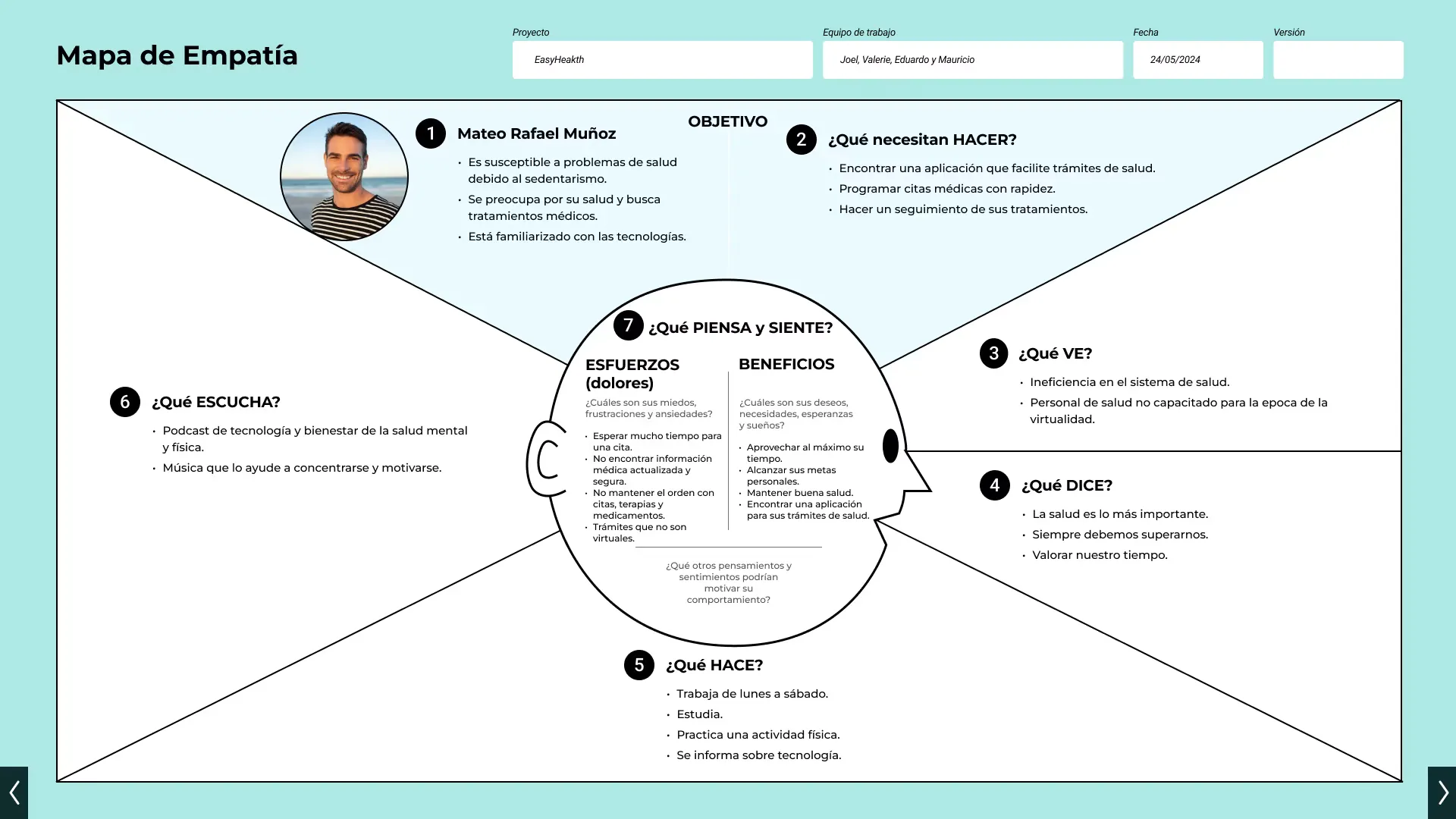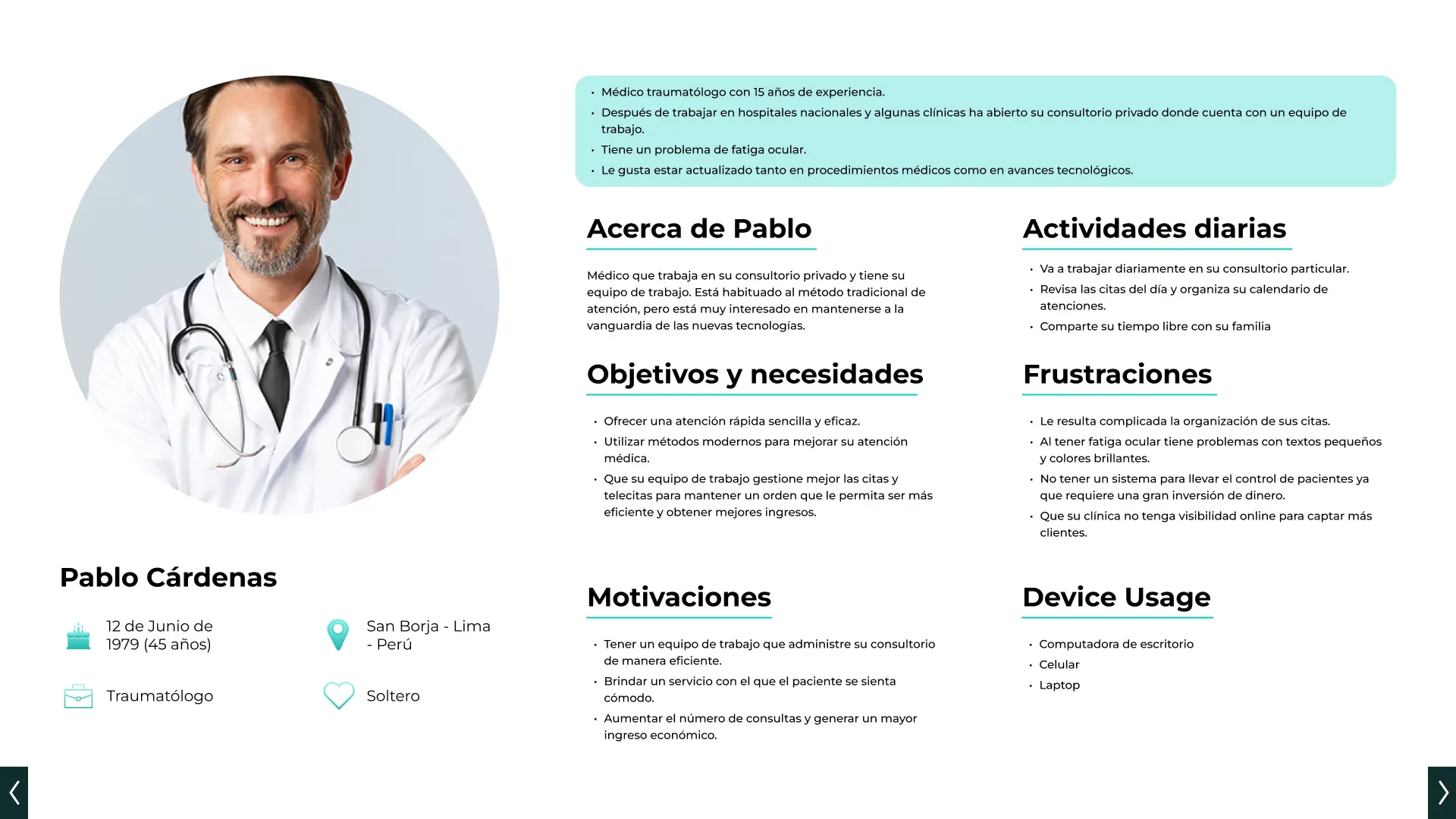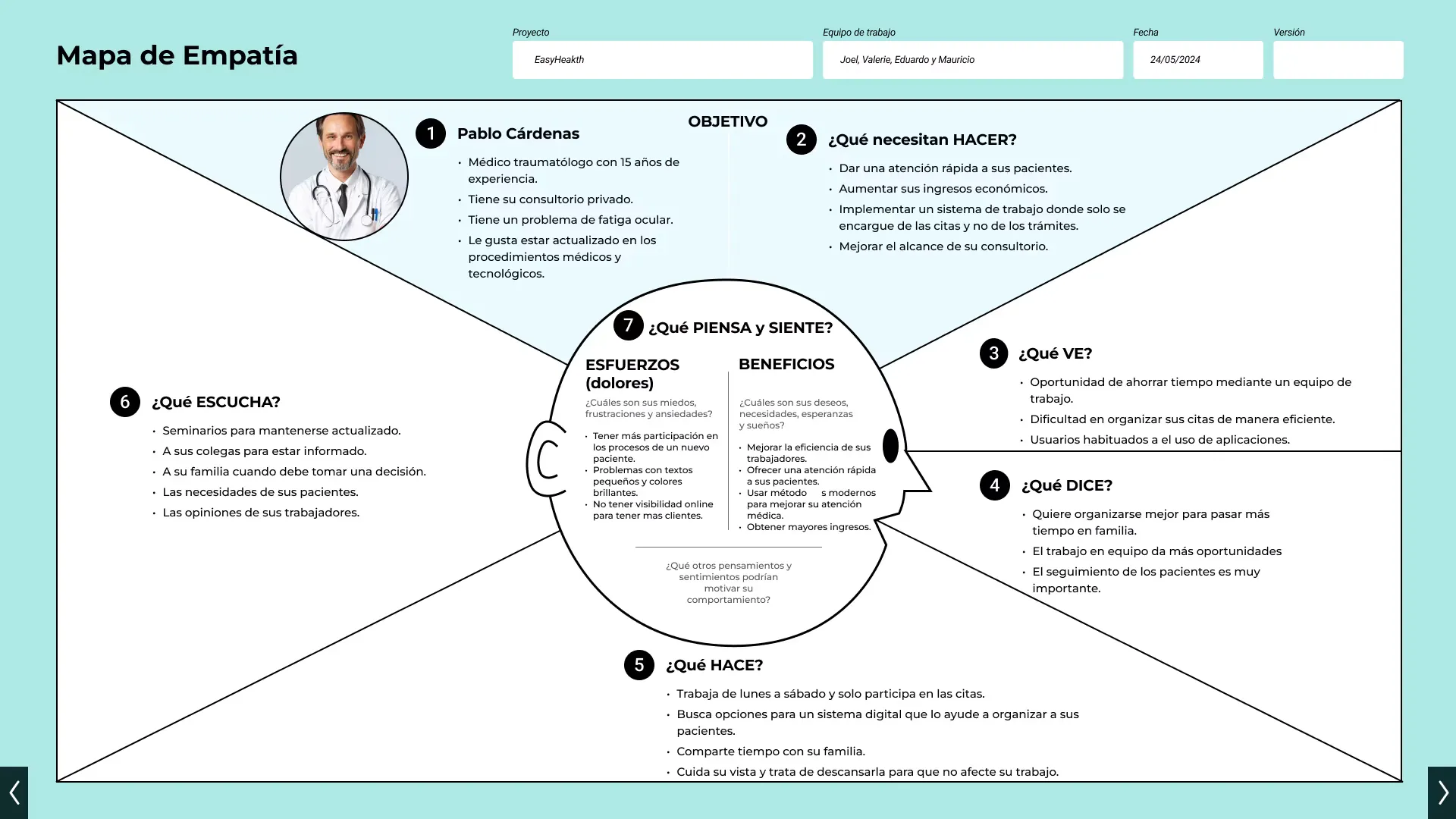1. Context
The core idea is to digitize healthcare management in Peru, replacing current fragmentation with a unified platform. The application allows users to search for healthcare professionals, access verified recommendations, and manage their medical care - all in one place.
Local focus:
- Specifically designed for the Peruvian market
- Adapted to urban and rural realities, considering limited internet access and cultural diversity
2. What was done?
- UI KIT: Creation and modification of reusable components (typography, color palette, UI components)
- Mobile design: iOS and Android design based on Material Design 3
- Web design: Desktop version design based on Bootstrap 5
3. Introduction
EasyHealth not only empowers patients but also optimizes management for clinics and medical centers. The app acts as a digital bridge between:
- Patients: Seeking fast, clear, and nearby healthcare services
- Clinics: Needing to manage appointments, show availability, and attract patients
Dual objective:
- For patients: Reduce search time and improve decision-making
- For clinics: Digitize administrative processes and increase reach
4. User/Patient Proto-Persona


5.1 Clinic/Staff Proto-Persona


5.2 Research: Parallel Problems
Patient Findings
- Use Google Maps, calls, and neighborhood recommendations
- “I see the clinic on Maps but don’t know if they accept my insurance” (Rosa, proto-persona)
- 3 out of 5 patients suspect prices shown online are incorrect
Clinic Findings
- 70% of small clinics use Excel or WhatsApp for appointments
- “I once scheduled two patients at the same time by mistake” (Carlos, proto-persona)
- Don’t know how to promote underutilized specialties (e.g. geriatrics)
6. Architecture: Differentiated Flows
6.1 Clinic Search
0 / 0
7. Impact and Validation
Impact Assumptions
- Patients: Reduce clinic search time from 2 hours to 7 minutes
- Clinics: Increase occupancy of underutilized specialties by 40%
Concept Validation
- Proto-persona testing:
- Rosa scheduled appointment in 4 minutes (vs 1 hour current scenario)
- Carlos reduced scheduling errors by 70% using interactive calendar
8. Lessons Learned
- Designing for two audiences requires balance:
- Example: Clinics wanted to hide prices, patients demanded transparency → Solution: Show base prices with “Final cost depends on your insurance” disclaimer
- Security vs simplicity:
- Offline medical history required local encryption without affecting performance on older devices
9. Conclusion
EasyHealth demonstrates how inclusive technology can unite patients and clinics through a common language:
- For Rosa, it’s peace of mind to find care without deception
- For Carlos, it’s the tool that transforms chaos into control
Next step: Test prototype in a central Lima clinic to validate assumptions in real-world context.
